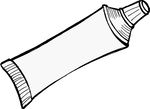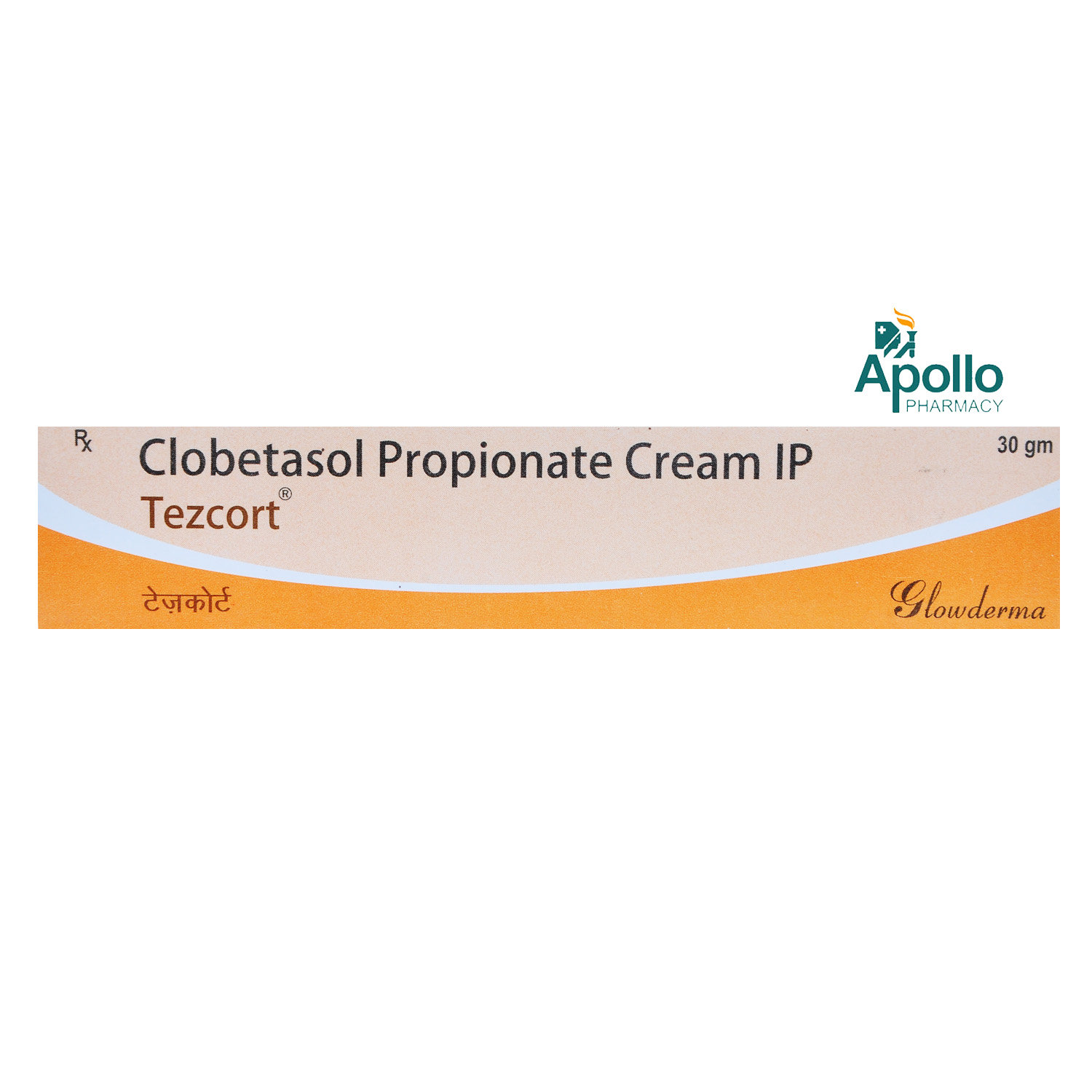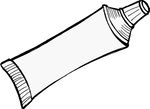Clogaurd 0.05%W/W Cream 30Gm


MRP ₹95
(Inclusive of all Taxes)
₹14.3 Cashback (15%)
Provide Delivery Location
Online payment accepted
 Prescription drug
Prescription drugWhats That
Composition :
Manufacturer/Marketer :
Consume Type :
Expires on or after :
Return Policy :
About Clogaurd 0.05%W/W Cream
Clogaurd 0.05%W/W Cream belongs to a class of topical corticosteroid medications. It is used for the treatment of autoimmune skin disorders such as psoriasis (scaly, itchy, and red patches on the skin), lichen planus (purplish, itchy, and flat bumps on the wrists, forearms, or legs), discoid lupus erythematosus (red, coin-shaped scales or crusts on the scalp, cheeks, and ears), and eczema (red and itchy skin). Autoimmune skin disorders are conditions in which immune cells attack the body's healthy cells, causing inflammation. Clogaurd 0.05%W/W Cream can suppress the immune system and reduce inflammation.
Clogaurd 0.05%W/W Cream comprises Clobetasol, an active corticosteroid with anti-inflammatory properties on the skin. It reduces swelling, redness, and itching by inhibiting the production of certain chemical messengers in the body that cause inflammation. Thus, Clogaurd 0.05%W/W Cream aids in treating skin conditions such as psoriasis, eczema, lichen planus, and discoid lupus erythematosus.
Always use the right amount of Clogaurd 0.05%W/W Cream as advised by the doctor or pharmacist. It would be best to use Clogaurd 0.05%W/W Cream regularly to get the maximum benefit. When Clogaurd 0.05%W/W Cream is applied to the skin, some persons experience a burning or stinging sensation for a few minutes. After a few days of use, this will no longer occur.
Inform your doctor if you are allergic to Clobetasol or any of the other ingredients present in this medicine. Do not use Clogaurd 0.05%W/W Cream to treat acne, rosacea (facial flushing on and around the nose), perioral dermatitis (red or scaly rashes around the mouth), anogenital pruritis (itching around the anus or genitals), itchy, broken, or infected skin which is not inflamed, and widespread plaque psoriasis (except single lesions). While applying, make sure it does not come in contact with the eye. If Clogaurd 0.05%W/W Cream accidentally comes in contact with eyes, rinse with warm water thoroughly. Please do not use it on unaffected areas or for other skin infections without informing your doctor. Do not use Clogaurd 0.05%W/W Cream in children under 12 years of age without a doctor's advice.
Uses of Clogaurd 0.05%W/W Cream
Directions for Use
Key Benefits
The skin gets inflamed when chemical mediators release chemicals into the skin that cause inflammation. It leads to rashes, swelling, and itching, which can be treated by Clogaurd 0.05%W/W Cream. It targets the immune system and lowers the immune response, providing some time for the inflamed skin to heal.
Storage
- Burning sensation is an abnormal side effect that needs medical attention. To relieve the burning feeling, your doctor may prescribe painkillers or antidepressants.
- Focused exercises can improve strength and reduce burning by soothing muscles.
- Change in lifestyle and improving nutrition can reduce the causes of burning sensation and provide relief.
- Your doctor may suggest nerve block injections as it is related to sensation in the skin.
- Burning feeling in a specific area would need mild electrical currents to reduce pain that targets the nerve affected. This practice must be done only if your doctor mentions it.
- Change positions or take a break from activity to relieve symptoms, as stinging can disturb your regular patterns.
- Avoid postures that put much pressure on the body area where stinging is felt.
- If you have a vitamin deficiency, take supplements or change your diet.
- Exercise regularly to improve inner strength.
- Follow your doctor's instructions to prevent stinging.
- Massage the affected area gently to get temporary relief.
- Report the itching to your doctor immediately; they may need to change your medication or dosage.
- Use a cool, damp cloth on the itchy area to help soothe and calm the skin, reducing itching and inflammation.
- Keep your skin hydrated and healthy with gentle, fragrance-free moisturizers.
- Try not to scratch, as this can worsen the itching and irritate your skin.
- If your doctor prescribes, you can take oral medications or apply topical creams or ointments to help relieve itching.
- Track your itching symptoms and follow your doctor's guidance to adjust your treatment plan if needed. If the itching persists, consult your doctor for further advice.
- Consult your doctor if you experience skin redness, itching, or irritation after taking medication.
- Apply cool compresses or calamine lotion to the affected skin area to reduce irritation.
- Stay hydrated by drinking plenty of water to help alleviate symptoms and keep your skin soothing.
- Monitor your skin condition closely and promptly report any changes, worsening symptoms, or concerns to your healthcare provider.
- Consult your doctor if you experience skin redness, itching, or irritation after taking medication.
- Your doctor may adjust your treatment plan by changing your medication or providing guidance on managing your erythema symptoms.
- Your doctor may recommend or prescribe certain medications to help alleviate symptoms.
- Apply cool compresses or calamine lotion to the affected skin area to reduce redness and itching.
- Stay hydrated by drinking plenty of water to help alleviate symptoms and keep your skin hydrated.
- Monitor your skin condition closely and promptly report any changes, worsening symptoms, or concerns to your healthcare provider.
- Mild hair follicle inflammation often heals on its own without needing treatment.
- You can apply a warm saltwater or vinegar solution to the affected area with a washcloth, or use over-the-counter antibiotics, oatmeal lotion, or hydrocortisone cream for relief.
- Avoid making the affected area worse by not shaving, scratching, or wearing tight clothes.
- Apply a warm compress to the area 3-4 times a day for 15-20 minutes to help speed up healing.
- Do not scratch, squeeze, or pop any bumps, as this may lead to infection or other problems.
- If self-care methods fail, consult a doctor for further treatment and advice.
Drug Warnings
Inform your doctor before using Clogaurd 0.05%W/W Cream, if you have previously had an allergic reaction (hypersensitivity) with another steroid. If there is an overdose, clean the area thoroughly and re-apply the medicine. Apply the medication carefully if you are using it on eyelids or near the eyes, as there is a risk of cataracts or glaucoma if the drug enters the eye frequently. Clogaurd 0.05%W/W Cream can enter the skin easily and may cause skin thinning because of repeated application. So, apply it carefully when using on broken or damaged skin and large surface area of skin. Inform your doctor immediately if you experience vision problems or any other abnormal signs. Do not use Clogaurd 0.05%W/W Cream at the same time as other creams or ointments such as a moisturiser. Wait at least 30 minutes between using clobetasol and any other product.
Drug-Drug Interactions
Drug-Drug Interactions
Login/Sign Up
Drug-Food Interactions
Drug-Food Interactions
Login/Sign Up
Diet & Lifestyle Advise
- Eat foods rich in quercetin (a flavonoid) such as apples, cherry, broccoli, spinach and blueberries.
- Consuming food rich in probiotics helps in developing the immune system against allergies.
- Limit intake of food that might trigger allergies such as dairy products, soy, eggs, and nuts.
- Avoid consumption of foods with excess sugar as it may flare-up inflammation.
- Include fruits, vegetables, whole grains, healthy fats and fish in your diet.
- Avoiding getting in contact with harsh soaps, detergents and rough fabrics.
Side Effects of Clogaurd 0.05%W/W Cream
- Burning or stinging sensation
- Pain (application site)
- Irritation or itching
- Skin thinning may cause stretch marks
- Blood vessels under the surface of your skin may become more noticeable.
Habit Forming
Therapeutic Class
All Substitutes & Brand Comparisons
RX
Freedom Cream 30Gm
Albatroff
₹76.5
(₹2.3/ 1gm)
19% CHEAPERRX
TEZCORT CREAM 30GM
Glowderma Lab Pvt Ltd
₹120.5
(₹3.53/ 1gm)
23% COSTLIERRX
Clobital 0.05%W/W Cream 30Gm
Talent India Pvt Ltd
₹133
(₹3.99/ 1gm)
40% COSTLIER
Product Substitutes
Drug-Diseases Interactions
Drug-Diseases Interactions
Login/Sign Up
FAQs
Clogaurd 0.05%W/W Cream comprises Clobetasol, an active corticosteroid with anti-inflammatory properties on the skin. It reduces swelling, redness, and itching by inhibiting the production of certain chemical messengers in the body that cause inflammation. Thus, Clogaurd 0.05%W/W Cream aids in treating skin conditions such as psoriasis, eczema, lichen planus, and discoid lupus erythematosus.
Clogaurd 0.05%W/W Cream is not recommended for the treatment of burns. It should also be not used on broken skin or open wounds.
Clogaurd 0.05%W/W Cream may stimulate hair growth. However, it should be used only when advised by a doctor.
Clogaurd 0.05%W/W Cream use in children is very limited and should be advised by a child specialist only.
Clogaurd 0.05%W/W Cream may increase blood sugar levels. Consult your doctor immediately if you experience any abnormal signs or symptoms while using Clogaurd 0.05%W/W Cream.
Using too much of Clogaurd 0.05%W/W Cream or using it for a long time may increase your risk of having adrenal gland problems.
Yes, you are eligible to take vaccines, but tell the doctor or nurse that you're using clobetasol so they can give the vaccine in an untreated area of skin.
Clogaurd 0.05%W/W Cream can bleach and lighten skin. However, using Clogaurd 0.05%W/W Cream for skin lightening is not clinically established. So, it should be used only when prescribed by a doctor.
Drug-Drug Interactions Checker List
- RITONAVIR
- ITRACONAZOLE
Disease/Condition Glossary
Eczema: Eczema is the name for a group of conditions that cause the skin to become dry and irritated. or eczema, a condition that causes the skin to become itchy, dry and cracked.
Psoriasis: Psoriasis is a skin condition that causes red, flaky, crusty patches of skin covered with silvery scales. The severity of psoriasis varies greatly from person to person. For some, it's just a minor irritation, but for others, it can majorly affect their quality of life. Psoriasis is a long-lasting (chronic) disease that usually involves periods when you have no symptoms or mild symptoms, followed by periods when symptoms are more severe.
Lichen planus: Lichen planus is a rash that can affect different parts of your body, including the inside of your mouth. Lichen planus on your skin can be very itchy, but not always.
Lupus: Lupus is a long-term condition that causes joint pain, skin rashes and tiredness. There's no cure, but symptoms can improve if treatment starts early.

Have a query?
Alcohol
Safe if prescribed
Clogaurd 0.05%W/W Cream may not interact with alcohol.
Pregnancy
Consult your doctor
Pregnant women should consult a doctor before using Clogaurd 0.05%W/W Cream.
Breast Feeding
Consult your doctor
Clogaurd 0.05%W/W Cream should be used with caution in breastfeeding mothers. However, if prescribed by your doctor and Clogaurd 0.05%W/W Cream is applied on the chest, make sure the affected area does not come into contact with the baby's mouth while breastfeeding.
Driving
Safe if prescribed
Clogaurd 0.05%W/W Cream does not show any effect on driving. But contact a doctor if you get any problems with your vision. Do not drive if you have problems with your eyesight after using Clogaurd 0.05%W/W Cream.
Liver
Consult your doctor
Clogaurd 0.05%W/W Cream should be used with caution in patients with liver diseases.
Kidney
Consult your doctor
Clogaurd 0.05%W/W Cream should be used in patients with kidney diseases only when prescribed by a doctor.
Children
Safe if prescribed
Clogaurd 0.05%W/W Cream should not be used in children under 12 years of age without a doctor's advice.










